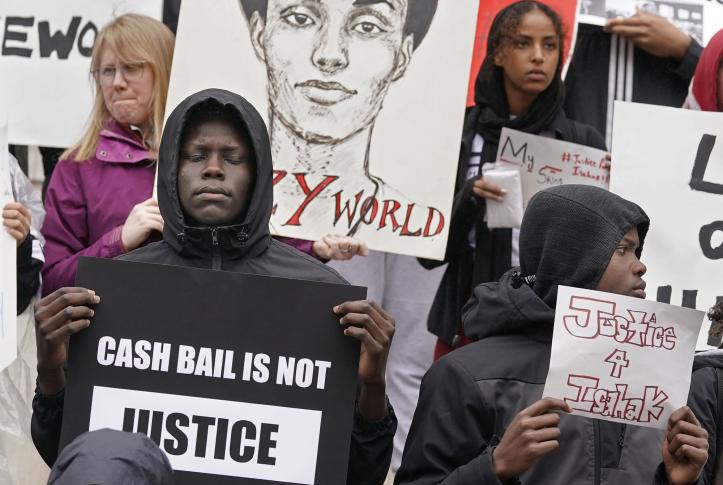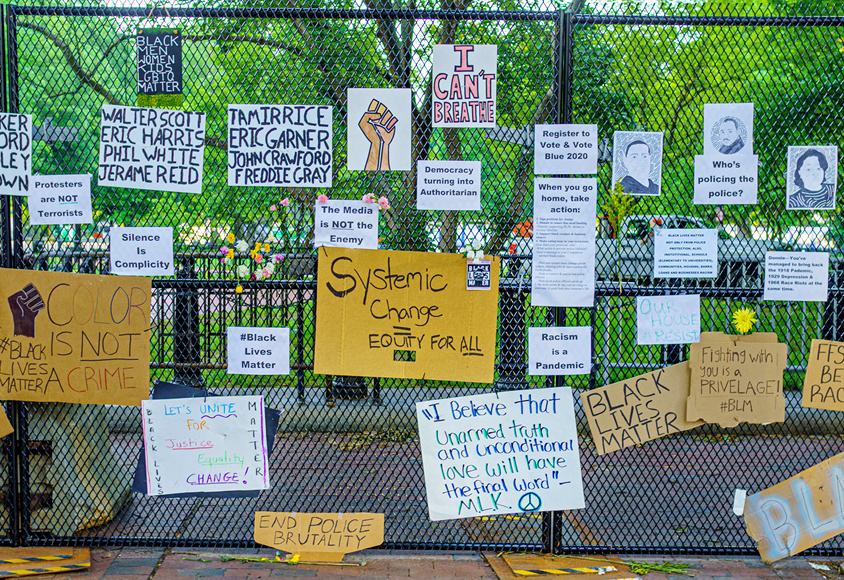Adriana was a young woman who was trafficked by her ex-boyfriend and eventually arrested for prostitution. She found a place in a shelter for victims of domestic abuse, as she regained control of her life. She then found herself trapped in the Kafkaesque labyrinth of the US justice system. She was required to pay a $1,500 cash bail or wait in jail, while strangers raised her child in an exhausted foster care system.
“You do the crime, you do the time,” the saying goes, but considering she was a victim of sex slavery, Adriana didn’t even do the crime. Now let’s talk about the time: In New York city, prostitution is a Class B misdemeanor, punishable by three months in prison or a $500 fine. Adriana’s bail was three times the financial penalty. Because of media scrutiny, she was released from Rikers Island early, but it cost her a safe bed in the shelter and she is still fighting to regain custody of her daughter. If it were not for the investigative journalists at the New York Times, it is likely this injustice would have been ignored, and I’m sad to say there are not enough journalists to cover or room to print the stories of all victims of bail abuse.
Let’s investigate how cash bail is the base of a carefully built classist and corrupt institution that needs toppling with political reform because it is eroding our social services and collective sense of family.

Harmful Effects
In the United States, there are 400,000 people who can’t afford cash bail currently trapped in jail cells for indefinite amounts of time waiting for their trial. Remember. They are accused of a crime and have not been convicted of anything. This should surprise no one, because according to the Prison Policy Initiative, “the median bail bond amount in this country represents eight months of income for the typical detained defendant.” This system allows those accused of the same crime to be punished differently based on class; the wealthy enjoy freedom and lavish lifestyles while the poor are imprisoned in cramped jail cells; a blatant inequity. They have lost their freedom, any hope of improving their position in society; their homes, their jobs, their health, and in Adriana’s case, custody of their children. They are shoved even deeper into poverty, especially those living paycheck to paycheck. They can’t pay for their property, they can’t parent their child from a jail cell. Waiting for a trial in prison increases the likelihood of chronic illnesses and mental health disorders. Evidently, bail leads to dramatically higher poverty rates and brutally punishes the poor without any proof of guilt.

This unjust effect ripples from harming individuals to harming their families and social networks. Approximately 150,000 children with a parent imprisoned pending bail, are forced to be separated and thrown into the foster care system. While there are good strangers who nurture safe homes for foster care, some take advantage of the system leaving children 10 times more likely to be abused. The state must pay for the unnecessary overpopulation of foster programs, rent assistance once the accused are released, and unemployment compensation. Taxpayers pay $13.6 billion every year for pre-trial incarceration. According to the Commonwealth Fund, three-fourths of the population in our overcrowded prisons have not been convicted of a crime, 90% of those simply cannot afford bail. By finding a solution to pretrial incarceration, prison capacity could be reduced by 67% percent*, ending prison overcrowding. It would become the silver bullet reducing violence, assault, unsanitary conditions, disease, and dramatically reducing the financial burden on the prison system. Cash bail benefits wealthy criminals and no one else.
The overarching inequalities of the bail system erode the presumption of innocence, distorting the standard of innocent until proven guilty to guilty unless wealthy. An accused individual who cannot pay bail averaging between $1,500 to $50,000 dollars should not be locked away for months, losing their job, their property, and the custody of their children. In fact, this directly opposes the due process rights and equal protection under the Fourteenth Amendment, the prohibition against excessive bail in the Eighth Amendment, and the right to a speedy trial guaranteed by the Sixth Amendment. Bail for non-violent crimes is not only unjust but unconstitutional! The cash bail system shovels struggling families into poverty with fewer opportunities for escape. This is illustrated in Adriana’s situation where her means of escape from prostitution- getting into a shelter for victims of domestic violence- is taken as she sits in jail. Her daughter, now forced into foster care, is 23% more likely to enter a life of crime, burdened by the absence of a mother she may never know.

A Potential Solution
Because of this inequity, there are certain policies that must be implemented immediately. First, we must eliminate cash bail for nonviolent criminals. The US Department of Justice defines non-violent crimes as “offenses which do not involve a threat of harm or an actual attack upon a victim.” Therefore, there is no risk of violent individuals remaining in public. In 2020, New York repealed cash bail for the majority of misdemeanors and nonviolent felonies, releasing the accused with electric monitoring or with no restrictions. This controversial bill greatly reduced the state jail population.
The accused must be reimbursed for public transportation to assure their attendance in court so that the accused from all financial backgrounds have equal ability to attend court.
Assessing flight risk using an existing scientific algorithm is a crucial step. to ensuring equality. In Washington DC, cash bail was eliminated in 1992 and 88-90% of defendants showed up for all their court dates. DC authorities apply factors like criminal records and age to result in a risk score. The fact that it takes up to six months for a case to come to court is not the fault of the accused. According to a study comparing judges and algorithms in New York City, AI is consistently outperforming judges and 42% of detainees that would have faced bail could be set free and never commit a crime again.
Using supervision tactics like using ankle bracelets are very effective. Those released with a GPS device have a re-offense rate that is 38% lower than those without the device. The primary issue with ankle bracelets in the past was battery power, but this is a solvable issue. It is rare for someone to escape such a device as removing it signals the police to respond.

The REAL reason for cash bail
It is also important to remember that profits from bail do not go towards serving the county or justice system, but rather to sustain a parasitic industry of private bond companies and insurers. Profitable groups lobby and fund political campaigns with money on the backs of potentially innocent detainees, who are in jail for not being able to afford their freedom.
Adriana and 400,000* others just like her have been pulled from their lives, robbed of safety, and are still fighting for their children. Corruption is the mysterious puppeteer pulling the strings of our failing justice system from the shadows — we need to stop feeding and sustaining it with more victims.
*This estimation doesn’t take into account those found guilty of crimes and returning to jail.
Feature image via Ricardo Ortiz from Pexels




